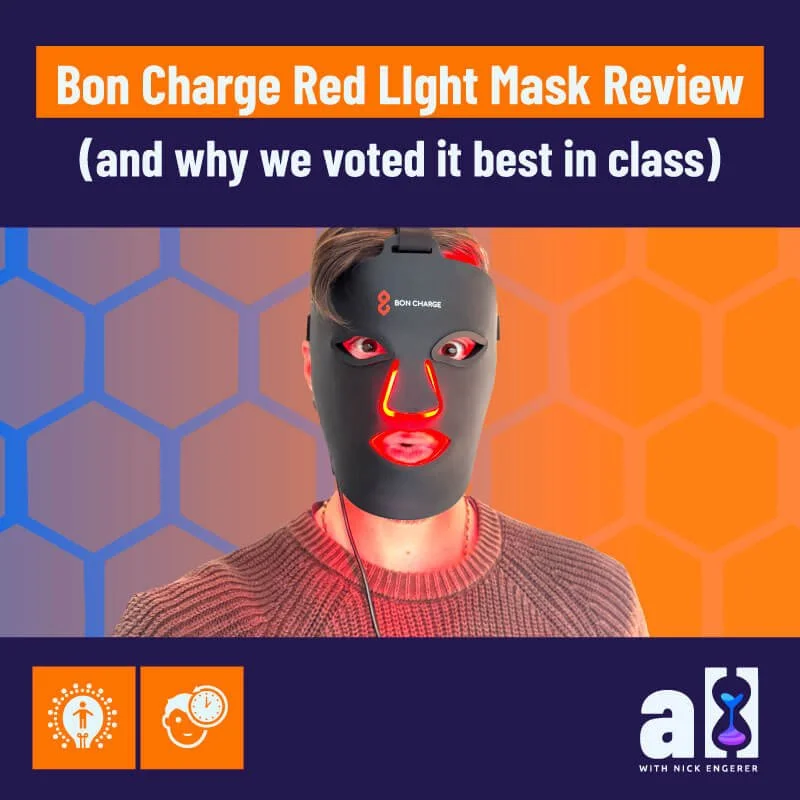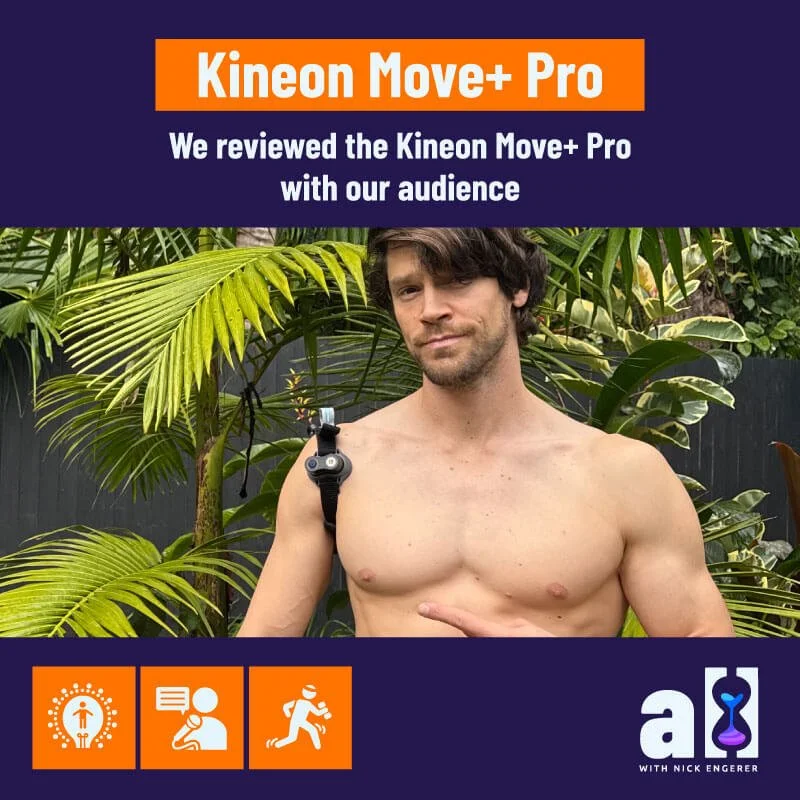Time travelling with the health nucleus: Ancestry in your DNA
Time travelling with the health nucleus!
This post is a personal entry from our Founder Nick
I have always found it fascinating to ask the question - ‘where have I come from?’. Not in terms of where I have lived or the birds and the bees - no I refer to the much grander scheme of things.
Each of us is the product of a man and woman who have combined their DNA to create offspring, and on a broadly twice decadal time scale, a new generation in our lineage appears. A multitude of factors have come together to make this so, right down the particular genetic information carried by the sperm and egg cell that made the action happen!
Exploring ancestry with my 84 year old grandfather
I recently visited with my 84 year old paternal grandfather, who has created meticulous records of the family genealogy, reaching back into the late 1800s. It was just after the US civil war when my great, great, great grandfather John immigrated from Bavaria, Germany to Bay County, Michigan.
It’s just one more story in the treasured history of European immigrants arriving on the shores of the United States to form new communities and create new opportunities in America.
Stories like this one, fill my heart with awe and wonder in their romanticism. But that’s not exactly what this blog is about now, is it?
While I might find this story elegant and inspiring, what I find much more interesting and actionable is what it tells me about my genetic heritage, and how I might further optimise my own life based on my own genome.
And until recently, anecdotes like the ones my grandpa compiled were the only good information we could access on this topic.
Whole genome sequencing at the health nucleus fills in the blanks
In May 2018, as I previously blogged, I had my first (and certainly not my last!) visit to the Human Longevity Inc. “Health Nucleus” in San Diego. One part of this amazing experience, was the drawing of blood to sequence my whole genome.
To be clear, this is not the same sort of tests you can get from “DNAfit” or “23andMe”, which look at only certain parts of the genome. While such tests can provide valuable and actionable data, what I had completed for myself is something only a few thousands of people around the world have done to date! But given the recent falls in cost for having this done, that’s sure to be quickly changing….
 |
Whole genome sequencing refers to the process of analysing the full sequence of human DNA, which is more than 3 billion base pairs in total! Specifically, ‘Whole’ genome sequencing includes both chromosomal DNA and mitochondrial DNA.
What did I learn sequencing my whole genome?
Did you know? While whole genome sequencing is still pretty expensive, you can still analyse over 700k locations of your DNA with Self-Decode for less than $100!
I am still sifting through the 400+ page report that reviews all of the results and insights that I gained from sequencing my whole genome.
With 3B base pairs of information, we are still learning what each of the many variations in each of our DNA actually mean.
Many of the results I received were actionable (e.g. my cardiovascular and alzheimers disease risk - more on that in future posts!), some were less valuable (e.g. my genetic disease risk - I would have already known by now if I had one of these conditions), and others were just downright fascinating.
And that’s what loops us back around to the stories and history that my grandfather had worked so very hard to compile.
He had spent countless hours researching, documenting and sharing these precious pieces of information, and still had only managed to reach back about 150 years in time.
But just imagine you could look even further. What could a thousand years of genetic history reveal? How about 10,000 years? 65,000 years or more? Is such an analysis possible? If so, what could it teach one about themself? And moreover, could it help them biohack their way to a long and healthy life?
Autosomal ancestry
First, let’s look at my autosomal ancestry determination. Autosomal DNA in genetic genealogy is used to describe the 22 pairs within the chromosome that are independent from the X and Y sex chromosomes. I won’t delve into it further here, as that is not my role.
I suggest you use the most excellent ISOGG Wiki if you want to go deeper!. Autosomal ancestry compares your genome to other genomes from different populations of known origins, and is most relevant for your genetic ancestry on the order of 100s of years in the past.
The Health Nucleus report provided me with two related images to this analysis, both of which have largely confirmed that hard work my grandfather completed!
But of course, it also collated the results from my maternal grandparents and paternal grandmother as well (which were not included in his hard work!).
Autosomal DNA analysis confirms - yep, German! And maybe a spot of English in me too ;)
Haplogroup exploration via my paternal chromosome
Hey, that was neat, but we kinda knew that information already. After all, I am white guy who likes beer.
Can we go back further? Yes we certainly can! The next tool for diving into ancestry are “Haplogroups”. ISOGG defines a Haplogroup as follows:
“A haplogroup is a genetic population group of people who share a common ancestor on the patriline or the matriline. Haplogroups are assigned letters of the alphabet, and refinements consist of additional number and letter combinations.”
Haplogroups can help identify the origins of your ancestors dating back on the order of thousands to tens of thousands of years! Common ancestors can be explored through both on the patrilineal (father) or the matrilineal (mother) histories.
Here we are looking into the sex chromosomes (as opposed to the autosomal regions above). Looking at my Y chromosome follows my father’s history, and this information will be shared by both my brother and my son (how cool is that?).
From my report:
“Your Haplogroup is: G2a1c2b1a. Haplogroup G is from approximately 48,000 years ago and is found in low frequencies in north Africa, north and west Asia, Europe, India, Malaysia, the Middle East, and Sri Lanka. It possibly had a period of isolation for over 10,000 years in southwest Asia.”
This beer drinking guy from Germany just had his mind blown! 10-50kya my ancestors were likely from modern day Turkey or Georgia! And since this is a Y-chromosome based analysis, that information is relevant to my son, my father, and even my 84 year old grandfather. I can’t wait to send him this blog!
Mitochondrial DNA haplogroup analysis
Mitochondria have been on my mind a lot lately. They are quite fascinating and turn out to be very important in the ageing process itself (for example, did you know - damage to mitochondrial DNA is one of the key reasons we age?). mDNA is inherited only from the mother, and therefore gives us the opportunity to look down my maternal genealogy. All of my biological siblings (we share the same mother) will have the same mDNA haplogroup, however my son will not, as he will have the mDNA of my wife.
From my report:
“YOUR HAPLOGROUP is: U5b2b3 Mitochondrial haplogroup U is estimated to have originated approximately 55,000 years ago. It has been identified at high frequencies in North Africa, Central and South Asia, the Middle East and Europe, where it is the oldest and predominant haplogroup.”
This analysis seemed to have much less confidence, as it spans from northern India, across parts of the Middle East and into eastern Europe, so I don’t quite know what to make of it at this stage! I’ll have to do some more digging around to see if I can narrow this down any further to make it more targeted.
Lastly, I am part neanderthal (and my wife is not surprised)
Hey guys, fun fact. I am 1.72% Neanderthal and only 98.28% Homo Sapien… 😮
OK, so this is not unusual as the typical range is 1.4% to 2.1% for Europeans. But I left you hanging for a minute and that was fun 🤗.
So - is this data actionable?
A key question I like to ask on this blog is - is the data action actionable? With respect to the ancestry analysis, I conditionally believe that it is.
This ancestry analysis tells me information about the environment that my body has evolved in response to, and offers hints to the diet that my ancestors likely consumed. Both of these are very influential aspects in the longevity journey.
For example, it may reinforce my routine use of cold exposure (cold showers, ice baths, cryotherapy), as it is clear from my autosomal analysis and haplogroup G categorisation that many of my ancestors were not the types to lounge in tropical climates, but instead would have seen hard winters.
They would have marginally evolved on the order of tens of thousands of years in response to those conditions.
Speaking of cold winters, I add an additional presumption that my body would likely favour some level of fasting and primarily carnivore/ketogenic diet for a certain portion of the year, based on what we’ve found here.
Additional insights could be gained by researching what these haplogroups have been discovered to eat in the past. But that is all research for another blog post and another day :). Trust me, I’ll get there. I’m too damn curious not to!
In closing, I would like to suggest that any of the above assumptions about environment and diet should be paired with further analysis of my genome sequencing results (e.g. like the Genomic Fit test I just completed at NextHealth!).
I should also note that given our increasing understanding of the role of the epigenome in expressing our genomic information, that the impacts of my current environment, diet and lifestyle also have a role to play in making conclusions about further biohacking and ’optimisation’ of myself.
This stuff is complicated and highly non-linear, but hey, bringing you guys along on this journey so we can sort it out together, is what this blog is all about.



















